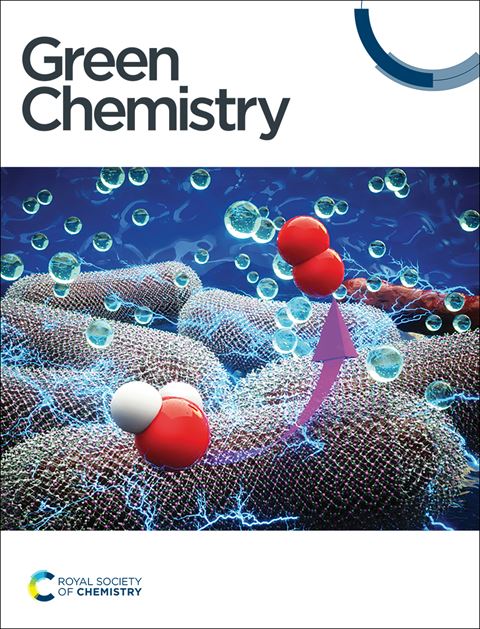Direct dissolution of lignocellulosic biomass by malonic acid-DBU protonic ionic liquid and preparation of high-performance all-biomass films†
IF 9.3
1区 化学
Q1 CHEMISTRY, MULTIDISCIPLINARY
引用次数: 0
Abstract
Renewable biomass resources have attracted a lot of attention from researchers due to the energy crisis and environmental pollution. The dissolution of biomass is an important topic of biomass refining, so it is crucial to design and develop green solvents. Among them, protonic ionic liquids (PILs) are potential solvents due to the advantages of variety, simple preparation, and low cost. In this work, the direct dissolution of a wide range of biomasses was achieved by using novel malonic acid-DBU PIL. Unlike previous dissolution solvents, this work not only obtained excellent dissolution results (10.2 wt%) but also analyzed in detail the effect of components in the biomass on the dissolution result. The comparative analysis of twelve biomasses summarised the regularity of the components in biomass affecting solubility, which provided instructive information for the field of dissolving biomass by ionic liquids. At the same time, the different types of biomass solutions were practically applied to achieve efficient utilization of resources. The high-performance biomass films with structural integrity, sufficient thermal stability, high tensile strength (107 MPa), excellent UV-blocking (99%), strong water stability, and biodegradability can be prepared by a simple process of coagulation bath regeneration and hot pressing. Moreover, the biomass films retained most of the valuable lignocellulosic fraction, effectively avoiding the waste of biomass resources. In summary, this work achieves the dissolution of biomass by using novel malonic acid-DBU PIL and simultaneously prepares high-performance biomass films, which provide a simple and easy pathway for the conversion and application of biomass.

求助全文
约1分钟内获得全文
求助全文
来源期刊

Green Chemistry
化学-化学综合
CiteScore
16.10
自引率
7.10%
发文量
677
审稿时长
1.4 months
期刊介绍:
Green Chemistry is a journal that provides a unique forum for the publication of innovative research on the development of alternative green and sustainable technologies. The scope of Green Chemistry is based on the definition proposed by Anastas and Warner (Green Chemistry: Theory and Practice, P T Anastas and J C Warner, Oxford University Press, Oxford, 1998), which defines green chemistry as the utilisation of a set of principles that reduces or eliminates the use or generation of hazardous substances in the design, manufacture and application of chemical products. Green Chemistry aims to reduce the environmental impact of the chemical enterprise by developing a technology base that is inherently non-toxic to living things and the environment. The journal welcomes submissions on all aspects of research relating to this endeavor and publishes original and significant cutting-edge research that is likely to be of wide general appeal. For a work to be published, it must present a significant advance in green chemistry, including a comparison with existing methods and a demonstration of advantages over those methods.
 求助内容:
求助内容: 应助结果提醒方式:
应助结果提醒方式:


